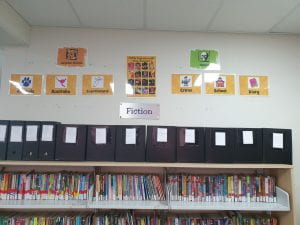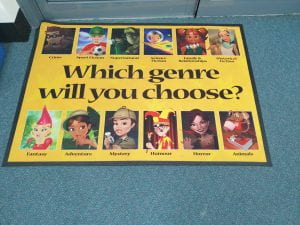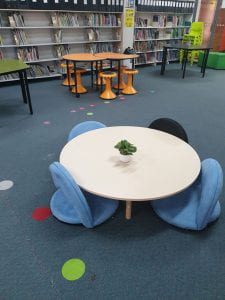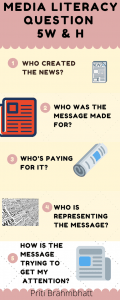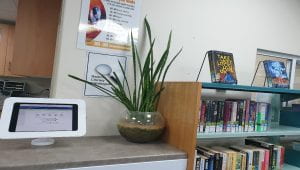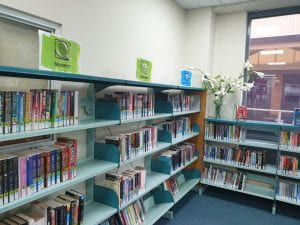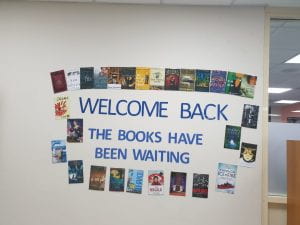PART A: Context for Digital Story Telling Project
This digital story telling (DST) project is for Stage 3 students studying about the life of refugees. The inspiration for this digital story came after co-teaching the unit on refugees to Year 5 students. The literature unit text was Mahtab’s Story by Libby Gleeson- the real-life story of Mahtab, an asylum seeker from Afghanistan. The focus of the digital story is to compliment the text. Students will be engaged deeply in this digital narrative which will enhance students’ understanding about the journey of refugees. Students will gain an enriching experience and will be able to understand this complex issue through this powerful medium.
This digital story project on the life of refugees. Zara’s Story is a historical fiction that tells about the harrowing journey of refugees and unimaginable dangers in their life. Digital story telling (DST) is an excellent way to generate interest, attention and motivation for the students in the classroom. 80% of the students come from a non-English speaking background. Students will get a virtual experience and learn about the life of a refugee. This digital story will include a range of literary materials including images and poster.
This video is created to build students’ skills in response to literature and recent events surrounding asylum seekers and refugees in Australia and around the world. Students will explore Australian identity in the context of change and continuity and will get insight into the life of individuals and group as refugees. This digital story will enhance current lessons within a larger unit, as a way to facilitate discussion about the topics presented a story and as a way of making abstract or conceptual content more understandable. This experience will allow students to make deep connections to the content.
It will be incorporated into English curriculum and will also integrate information and communication technology (ICT); requirement of NSW National Education Standards Authority (NESA) Syllabus. The outcomes that will be covered ACELA1525, ACELA1518, ACELA1520, ACELT1613, ACELT1615, ACELT1617, ACELT1618, ACELT1800 and English Syllabus outcomes EN3-1A, EN3-3A, EN3-5B, EN3-7C, EN3-8D, EN3-9E.
Digital storytelling allows opportunities not just for reading, but for creating as well. For any curriculum area that entails writing, digital storytelling could transform students’ perceptions of and their actual abilities to express themselves through the written word (Tackvic, 2012). It will assist students who struggle with writing.
Australian Curriculum and Reporting Authority (2014) General Capabilities state that by the end of Year 6 students use ICT effectively and independently or collaboratively create and modify digital solutions, creative outputs or data representation/ transformation for particular audiences and purposes. Digital story telling can fulfill these criteria. When these kinds of topics and issues are taught in school, it develops empathy and tolerance in students.
Teachers and students will benefit from this resource as it will inspire to dig deep and learn more about the topic. The digital story is told by using the digital tools such as Adobe Spark and Canvas. These digital tools add a positive dimension to traditional literacy (Tackvic, 2012). Adobe spark is easy to use, and it allow students to co-edit their projects and share via twitter, Facebook, email, Instagram and more. Adobe Spark is free to use and supports all the web browsers as well as chrome books. It allows to tell story into a captivating animated narrated video form and also makes it possible to import only creative commons licensed images. All the images used in the video are from Adobe Spark.
One of the main objectives of this DST is to provide the diverse learners in the classroom with multiple opportunities to familiarise with the topic and gain better understanding. DST can be beneficial to diverse learners as instructional multimedia create opportunities for all learners to become active and empowered learners by facilitating problem solving and creativity and enhancing student learning. Also, students with disabilities often feel confident with the use of technology to support learning (Rhodes, 2007).
This Adobe spark video will be used as an experiential learning resource for students to support the understanding about seeking refuge and migration. Students can also create and share their digital project with sister schools as they are learning the same topic. Overall, it will demonstrate the richness of learning that will occur as students engaged in reading and writing through a great deal of talking, listening, observing and viewing with concrete materials, print and digital texts (Walsh, 2010).
At the end of the video, teachers can ask students to make posters to create awareness regarding the aid we can provide to refugees using tools such as canva.
Part B: URL
PART C: Critical Reflection
As I had mentioned in my blog 1, that I had experience with only the traditional literature presented in digital form. This subject has given me the exposure to different ways in which literature can be used in the digital world to provide engaging experience to students. Lamb and Walsh’s articles gave me an insight in to evaluating a digital literature.
I strongly agree that digital literacy has the ability to make meaningful connections between disparate ideas and to apply existing knowledge in new ways are key aspects of creativity (Sukovic, 2014). Digital storytelling provides a wealth of opportunities to engage students in content learning; no matter what content they explore, the process of research, writing, creating, and editing a digital story builds essential 21st century literacy skills.
Digital story is more than just technology. It gives students rich experiences and enhances their perceptions as it is a medium of expression, communication, integration, and imagination (Malita & Martin, 2010). Books with multimedia elements deepen the reader’s understanding and appreciation of the story. When students collaboratively create a digital story, they develop communication skills, learn to ask questions, express opinions, construct narratives and write for an audience, improving also their language and computer skills by using software that combines a variety of multimedia: text, images, audio, video and web publishing(Malita & Martin, 2010). Also, when digital stories are created, students not only become more technologically literate, but they also become designers, listeners, interpreters, readers, writers, communicators, artists, and thinkers (Kajder, 2004). It combines hands on creativity and technology making literacy a fun learning activity.
It is challenging for educators to continue to maintain students’ motivation to read books and to engage in sustained reading. However, the interweaving of digital technology motivates students and allows for a holistic learning experience with talking, listening, reading and writing being interdependent (Walsh, 2010). We need to incorporate basic aspects of digital communication technologies in relation to syllabus outcomes. I found Kinglesy (2007) article on 20 ways to empower diverse learners with educational and digital media very interesting. It provides practical ways to utilise digital tools to support classroom teaching and learning.
Today anyone can publish their digital book relatively easily and put it in the digital world and therefore it is very necessary to evaluate the quality of digital texts. Through this subject, some of the ways that I learnt to evaluate the digital text are as follows
- To check the content of the text
- To read the book and seek out the recommendations of others before suggesting it to children.
- To consider the ease of use, the promotion of understanding, and the literary worthiness of the text.
In today’s digital world, students come to school with a wealth of experience in the use of digital technologies for personal entertainment, learning and social interaction, schools need to provide an environment that exploits this digital familiarity (O’Connell, 2015). According to Dobler (2013), as educators we should teach children how to make wise decisions about book selections of all types, and also make these selections for children when necessary.
Teachers need to be aware of the copyright issue and fair use of digital learning materials. Module 6 provided insight into creative commons licensing and alternatives to source free digital literature. Through this subject, I became aware of the free digital resources. I emailed staff at our school and also included in the school’s newsletter regarding project Guttenberg, International Children’s Digital library, Aust Lit children’s Digital Resource and iBook store free iBooks or eBook Apps. As mentioned in my blog 1, the school has no eBooks subscription, so these free digital resources were highly beneficial and appreciated by the school community. During pandemic, these resources provided equitable and fair use to all our students.
To address this national expectation of the Australian Curriculum: English which aims to ensure that students ‘listen to, read, view, speak, write, create and reflect on increasingly complex and sophisticated spoken, written and multimodal texts across a growing range of contexts with accuracy, fluency and purpose’ (Australian Curriculum and Reporting Authority, 2014), the learning of this subject of incorporating eBooks, interactive text and digital story telling will be very useful to me in future. I have thoroughly enjoyed making digital story telling video using Adobe Spark. I will continue to learn, explore and use digital storytelling further in my professional life.
References
Adobe Spark. (2020). Designing like a Pro. Retrieved from https://spark.adobe.com/sp/
Brahmbhatt, P. (2020, September 4). Critical Reflection of Experiencing Digital Literature Experiences. Retrieved from https://thinkspace.csu.edu.au/priti/category/inf-533/
Canva. (2020). Canva- Collaborate & Create amazing graphic design for free. Retrieved from https://www.canva.com/
Dobler, E. (2013). Looking beyond the screen: Evaluating the quality of digital books. Reading Today, 30(5), 20-21.
Kajder, S. (2004). Enter here: Personal narrative and digital storytelling. The English Journal, 93, 64-68
Malita, L., & Martin, C. (2010). Digital Storytelling as web passport to success in the 21st Century. Procedia-Social and Behavioral Sciences, 2(2), 3060-3064. http://www.sciencedirect.com/science/article/pii/S1877042810005057
O’Connell, J., Bales, J., & Mitchell, P. (2015). [R]Evolution in reading cultures: 2020
vision for school libraries. The Australian Library Journal, 64(3),194-208. 10.1080/00049670.2015.1048043.
Rhodes, J. M. (2007). Teacher-created electronic books: Integrating technology to support readers with disabilities. Reading Teacher, 61(3), 255-259
Sukovic, S. (2014). iTell: Transliteracy and digital storytelling. Australian Academic & Research Libraries, 45(3), 205–229. http://doi.org/10.1080/00048623.2014.951114
Tackvic, C. (2012). Digital storytelling: Using technology to spark creativity. The Educational Forum, 76(4), 426. Retrieved from https://www.tandfonline.com/doi/abs/10.1080/00131725.2012.7075622
Walsh, M. (2010). Multimodal pteracy: what does it mean for classroom practice? Austrapan Journal of Language and pteracy, 33(3), 211–239. Retrieved from http://www.alea.edu.au/documents/item/63
